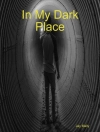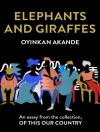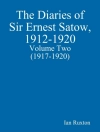In ‘The Charwoman’s Daughter, ‘ James Stephens weaves a poignant narrative that delves into the struggles and aspirations of a young girl in Dublin’s working-class milieu. Through vivid imagery and lyrical prose, the story captures the complexities of familial relationships, particularly the bond between the protagonist and her mother, a charwoman. Set against the backdrop of early 20th-century Ireland, the novel explores themes of sacrifice, ambition, and the search for identity, all while maintaining a deep-rooted sense of place and cultural context that resonates throughout the text. James Stephens, an influential figure in Irish literature, drew upon his own experiences growing up in a working-class environment to craft this touching tale. His early life in Dublin, coupled with his later involvement in the literary revival movement, prompted him to highlight the stories of marginalized voices. Stephens’s unique blend of realism and poeticism reflects his belief that the lives of ordinary people carry profound significance, further enhancing the novel’s emotional depth and resonance. For readers seeking a richly layered narrative that illuminates the resilience of the human spirit, ‘The Charwoman’s Daughter’ is a must-read. With its masterful storytelling and authentic representation of working-class struggles, this book offers an insightful exploration of hope and tenacity amidst adversity, making it a timeless addition to the canon of Irish literature.
Yazar hakkında
James Stephens (1882-1950) was an Irish novelist and poet, celebrated for his contribution to the Irish literary renaissance. He was born in Dublin and was an orphan by the age of two. Despite a lack of formal education, Stephens demonstrated an avid interest in literature. His poetic voice and unique narrative style capture the lives of ordinary people and infuse mythological elements with a modern sensibility. Best known for works such as ‘The Crock of Gold’ and ‘Irish Fairy Tales, ‘ Stephens’s writing weaves wit, wisdom, and a deep understanding of human nature. A chief example of his narrative prowess is found in ‘The Charwoman’s Daughter’ (1912), a novel that showcases his ability to draw complex characters with compassion and humor. It tells the story of Mary Makebelieve, a young woman’s experiences and imaginings in the slums of Dublin. Stephens’s work is an essential part of the Irish literary canon, embodying the vibrant spirit of Ireland while exploring universal themes that resonate across cultures and time. His literary style is marked by a blend of lyrical prose, keen social observation, and a rich use of allegory, setting him apart as a significant figure in 20th-century literature.












